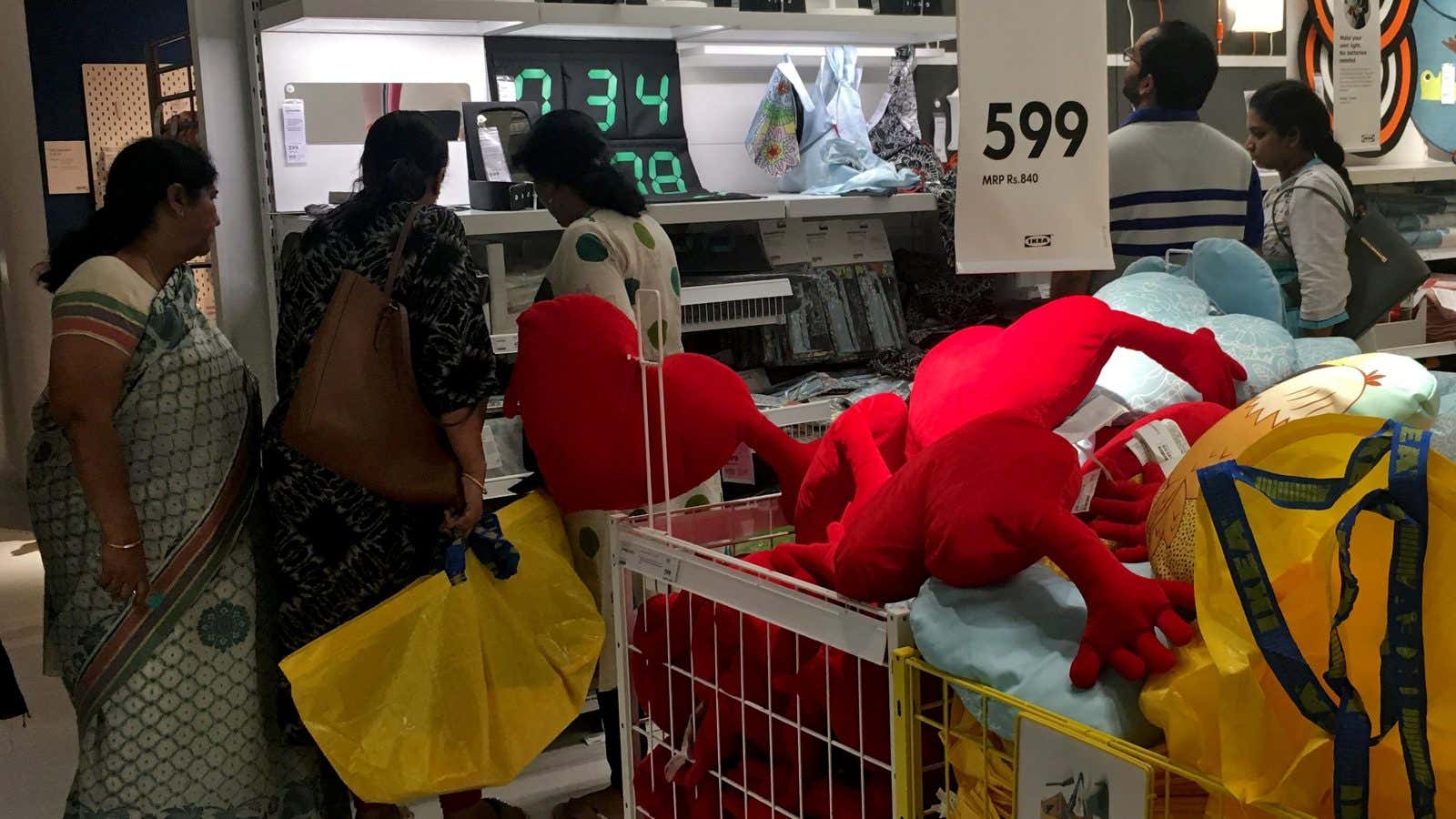Two international retail brands that debuted in India with much fanfare over the past couple of years have missed their growth targets in the country. Experts believe their over-enthusiasm and the poor state of the economy could be the primary reasons.
Last August, the world’s largest furniture retailer, IKEA, opened its first store in the southern Indian city of Hyderabad. The launch was spectacular, with 40,000 visitors on day-one alone. Buoyed, the Swedish company then said that it expected six million visitors within the first year.
A year later, however, the number stands at four million.
Similarly, minimalist retailer Miniso, fell short of meeting its original target. The Guangzhou, China-based firm opened its first store in India in August 2017 and had said back then that it planned to open 800 by 2019. Two years on, that target has been trimmed sharply to only 150.
Slowdown woes
Industry observers say that the slower growth in economy has impacted overall business environment affecting demand across sectors.
GDP growth in fiancial year 2019 slowed to a five-year low of 6.8%, with India losing the world’s fastest-growing-economy tag. Based on the government’s own estimates, it is expected to increase to only 7% by 2020. Capacity utilisation in most of the manufacturing segments is 75% on average, according to a Ficci survey, even as inventories pile up. FMCG and automobile industry are struggling with lower sales.
“In such times, consumer demand is expected to be impacted for every industry and brand,” said Umashankar Venkatesh, professor of marketing at Great Lakes Institute of Management, Gurugram. “IKEA India and Miniso being no exceptions.”
Over-enthusiasm?
Some experts believe that both IKEA and Miniso might have overestimated the market-potential, getting carried away by the first burst of enthusiasm among Indians for their brands.
“While planning, a lot of foreign brands tend to look at the sheer size of the market in India, which is huge and therefore, the projections are often overestimated,” said Ranjeet Kumar, CEO of Mumbai-based brand and digital marketing firm Team Pumpkin.
However, they forgot that a number of international brands, have in the past, failed to survive in India.
For instance, in 2015, Debenhams, UK-based lifestyle retailer, shuttered in the country due to its high price tag. The same year, US-based online marketplace Groupon, which connects consumers with local merchants, shut down just five years after its launch. It simply couldn’t sustain a business led by discounted deals.
“Once the novelty value has worn off, the core value that a brand represents must powerfully and uniquely shine through. Otherwise, the brand’s engagement with consumers will taper off,” said Venkatesh of Great Lakes Institute of Management.
Course correction
Yet, IKEA and Miniso are not giving up in India.
After opening it’s massive Hyderabad store in August 2018, IKEA said it will be launching smaller sized stores in multiple cities, starting with India’s financial capital, Mumbai.
“The 400,000 square foot store in Hyderabad cost IKEA India an estimated Rs1,000 crore, upfront. This puts inordinate pressure on a brand chasing ever larger footfalls,” said Venkatesh. “This is a business era, where platforms which act as aggregators dominate. In such a market, a player that follows an asset-light model has a greater chance of being successful. Going online and operating smaller stores is likely to help IKEA India grow its business in the country.”
Indeed, IKEA today (Aug. 19) launched online sales in Mumbai. Similar launches are likely to follow in Hyderabad and Pune.
Miniso has learnt its lesson, too. “The ownership pattern of malls is different here in India as compared to China. In China, one builder posses the ownership for a number of locations, so when we sign the contract, we get access for all the locations they are operating in,” Tyrone Li, general manager at Miniso India, told Quartz. “In India, the builders can offer access to maximum 15-20 locations and thus we are taking longer to open stores here than the anticipated time.”
Ambitious still
The course corrections aside, these companies have showcased impressive performances in India, experts say. For instance, Miniso clocked Rs700 crore ($98 million) in revenue during the first year of operations in the country. And IKEA’s four million visitors is a considerable figure for its first year.
The confident retailers have, thus, set ambitious targets.
IKEA India hopes to reach 100 million Indians in the next three years. “Through our new retail direction, we will meet millions of more Indians in the way they want (offline or online) and when they want,” said Preet Dhupar, CFO of IKEA India.
Miniso is localising its offerings: “The consumers here are really confident and vocal about their needs. Based on consumer feedback, we are developing a product range that is more relevant to the Indian market.”
Clearly, IKEA and Miniso are in for the long haul.
